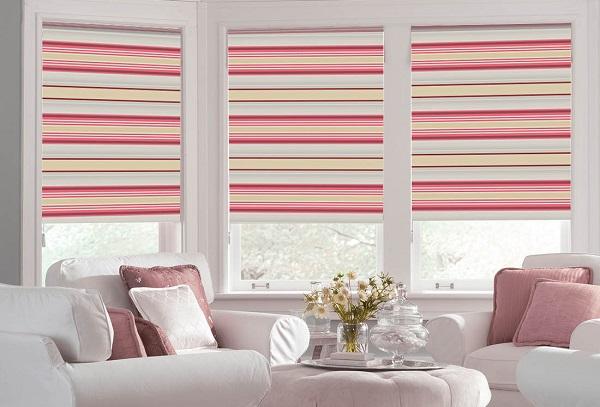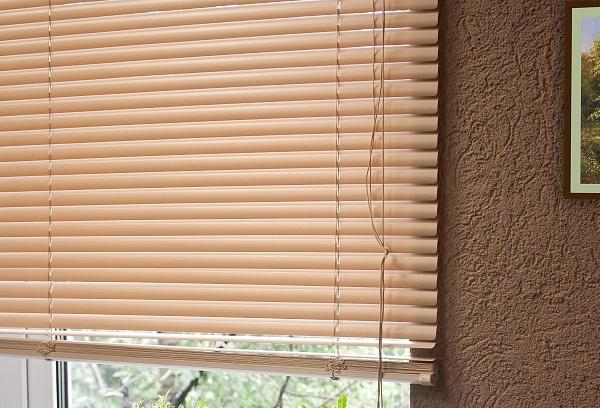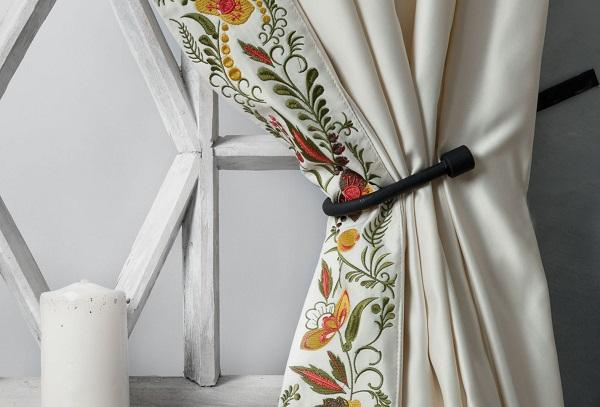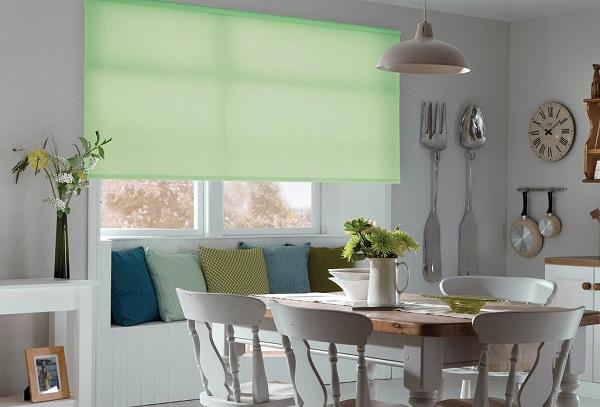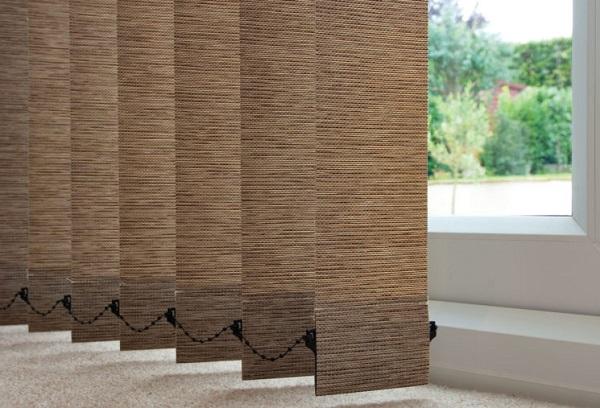Blinds, regular or roller blinds: what to choose for the kitchen and loggia
Content:
When decorating a kitchen combined with a balcony, special attention is paid to the windows. Therefore, the question of what is better than regular roller blinds or blinds becomes very relevant.
Regular curtains
Until recently, traditional textile curtains were the most popular option for decorating window spaces, regardless of the type of room. However, when used in the kitchen, due to high humidity and soot, the fabric, as practice has shown, absorbs unpleasant odors and grease vapors. Therefore, kitchen curtains must be durable enough to survive many frequent washes.
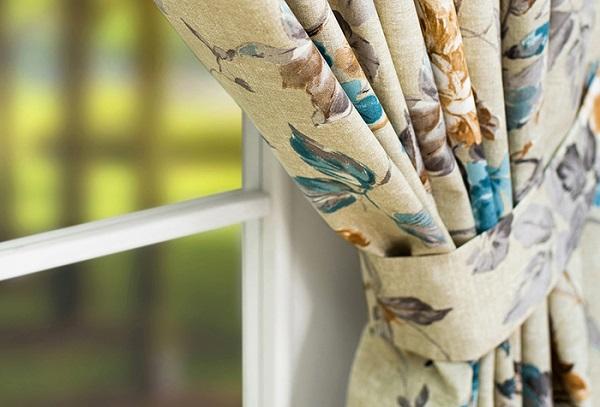
The following requirements apply to curtains used in the kitchen and on the adjacent balcony:
- maximum simplicity of design (no lace, fringe, voluminous decor);
- basic care (easy wash, quick dry);
- strength and wear resistance.
A bad choice for the kitchen would be curtains made of velvet or velor, items with ruffles and ruffles, and crocheted curtains.
Roller blinds
Roller blinds, or as they are also called, roller blinds or roller blinds, are a type of lamella curtains that are increasingly found in modern kitchen interiors.
Roller shutters consist of a sheet fixed on a bracket and a shaft that is responsible for winding this sheet. Moreover, winding can occur either mechanically or remotely, for example, via a remote control or smartphone. The main advantage of roller blinds is functionality. They allow you to block sunlight either completely or partially, so owners can adjust the level of lighting.
The fabric for roller shutters can be made from polyester with PVC coating or from a mixed fabric, which in addition to synthetics contains linen, cotton or jute. The fabric for roller blinds is treated with an anti-dust, antibacterial and antistatic composition. For plastic windows in the kitchen, it is more advisable to purchase roller shutters with water-repellent impregnation.
Blinds
Blinds (“pleated”, “Venetian shutters”) are a type of light-shielding device that consists of vertical or horizontal slats. Most often, blinds are used to decorate the space of offices, medical and educational institutions, and conference rooms.
This type of curtains has many options for textures, colors and materials. Blinds are also distinguished by the method of fastening. They can be fixed on the ceiling, wall, window sash. As for the material of manufacture, the most common are plastic pleated ones, but wooden and aluminum options can also be found on sale. Wooden options are the most environmentally friendly, and aluminum options are wear-resistant. Blinds are great for non-standard window openings, loggias, and terraces.
What is the difference?
To better understand what the difference is between all these types, it is necessary to determine the parameters by which they can be compared.And it’s most convenient to do this in a tabular version:
| Regular curtains | Roller blinds | Blinds | |
| Appearance | Fabric cloth | Blade wound onto a shaft | Slats fastened horizontally or vertically |
| Fasteners | Wall or ceiling cornice | The lifting mechanism is mounted on a wall, ceiling or window | Can be installed both indoors and outdoors |
| Functions | UV protection, decor | Protection, light adjustment, decor | Protection, adjustment, light diffusion |
| Materials | Textile | Polyester with PVC, natural materials | Polyester, plastic, aluminum, wood |
| Care | Washing, ironing | Wipe with a cloth once a week | Wiping with a cloth or vacuuming |
| Price | From 480 rubles | From 550 rubles | From 330 rubles |
Pros and cons of curtains
If we talk about the advantages of ordinary curtains, the first thing that comes to mind is decorativeness. Fabric curtains have long been a working tool for interior designers. Properly made drapery or selected structural fabric can transform a room.
The second is accessibility in terms of assortment. Curtains for the kitchen can be made from any woven material: from cotton to synthetics. Their decorative design is no less varied. Everything from printed patterns to embroidery and perforation is popular. There are products on the market that will fit into any budget.
And last but not least, the advantage of regular curtains is ease of care. The fabric can be easily removed from the curtain rod, machine washed and dried naturally.
This is interesting! If you hang a slightly damp curtain on a curtain rod, it will dry without creases or wrinkles, so ironing will no longer be necessary.
The main disadvantage is rapid contamination.In addition, fabric, unlike plastic, absorbs odors and soot much better.
Pros and cons of roll
According to most reviews, roller blinds have the following number of advantages:
- dimming degree adjustment;
- water- and dirt-repellent impregnation;
- different fastening options;
- long service life;
- practicality;
- ease of care;
- hypoallergenic (do not absorb dust and dirt);
- breathability;
- variety of design.
It should also be mentioned that roller shutters save window sill space, can be made to fit any window opening and be “equipped” with a mirror reflective surface, which will keep the room cool.
Disadvantages worth mentioning:
- higher price;
- impossibility of minor repairs to the canvas (if there is a defect, the canvas is completely replaced);
- condensation (due to the tight fit appears on the glass under the roller blind).
Roller shutters are often combined with classic curtains, thereby combining functionality and comfort.
Pros and cons of blinds
Blinds are an ideal option for a balcony. “Venetian shutters” attract buyers for the following reasons:
- reliability;
- ease of care;
- variety of materials, textures and colors;
- the ability to diffuse and adjust light;
- budget;
- basic repairs (if the lamellas break, they can be replaced individually);
- durability;
- Possibility of use both indoors and outdoors;
- versatility (can be installed on any type of opening, including non-standard ones).
However, with so many advantages, there are also disadvantages:
- high cost of wooden options;
- aluminum varieties heat up and deform in the sun, and plastic ones can smell;
- wooden blinds cannot be used in rooms with high humidity;
- draft noise;
- damage to the window profile when installed on the window.
In addition, blinds interfere with ventilation. They will have to be fixed in advance at the top point.
What to choose?
When choosing curtains for the kitchen, loggia or balcony, you should be guided by the following recommendations:
- when choosing the color of the light protection system, it is necessary to take into account the location of the window openings, taking into account the direction of the world;
- small windows are easiest to decorate with mini roller blinds;
- It is worth adding vertical blinds to a room with a low ceiling (they will visually add height);
- Horizontal blinds will help expand the room;
- Roller shutters are suitable for frequently ventilated rooms.
If we talk about what is better than ordinary curtains, roller blinds or blinds, then when decorating a kitchen and balcony, it is more advisable to focus on the last two. Although they are more expensive, they are much more practical in terms of care and service life.
